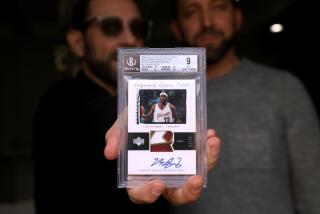This Fan Knew Browns Didn’t Have a No. 1/8
We settled into our seats for a doubleheader between the Detroit Tigers and the St. Louis Browns on a hot August Sunday at Sportsman’s Park in 1951.
I started looking at the Browns’ roster in the 10-cent scorecard. Any day you went to a Brown game, scanning the roster was imperative; Bill Veeck, who owned the ragamuffin team, was constantly shuffling players in and out of the minor leagues, making trades with other teams.
The number that started the roster jumped out at you: 1/8--Gaedel.
After that entry came: 2--Marsh, if; 3--Arft, if; 5--Young, if, etc. Max Patkin, the rubber-jointed contortionist, was No. 0, listed as a coach, and he actually did do his zany routines on the first-base coaching line.
I had just turned 13, a full-fledged member of the St. Louis Browns Knothole Gang, which meant we got in free for all the games. At least the rest of the American League was pretty good in those days.
We wondered about this Gaedel thing. “Who is he?” somebody asked. “What’s his number? How come there’s no position listed?”
“The printer must have made a mistake,” somebody else said. “Must be somebody Veeck brought up from the minors.”
We put aside our thoughts about this mysterious “ 1/8--Gaedel,” while the Tigers and Browns played the first game.
Veeck had designated this day as the 50th anniversary of the American League and had gotten Falstaff, one of the St. Louis breweries, to promote the games heavily. That’s the reason that more than 20,000 fans (counting freebies) were there. More typical of the Browns would have been a crowd of 5,000. The Knothole Gang’s section was in the upper deck, not far down the first-base line. Some of the best seats in the house.
The Browns started the day in last place, 37 games behind the Cleveland Indians and the New York Yankees, who were tied for the AL lead.
Between games, from out behind the storage area in back of the lift-up right-field wall, came a 7-foot papier-mache cake that was wheeled into the infield. Out popped this little guy with a bat the size of a violin, wearing No. 1/8 on his Brown uniform. So this was Eddie Gaedel.
The second game was about to begin, and once more we forgot about Gaedel. We were more puzzled about Frank Saucier being announced as the Browns’ leadoff batter. Saucier, a young outfielder who had once hit .400 in the minors, was supposed to have an injured shoulder.
The Browns came to bat in the bottom of the first inning, but Saucier never came out of the dugout. Instead, we saw this tiny figure emerge, swinging a miniature bat.
When it was announced that Gaedel would bat for Saucier, the crowd was stunned into silence, then many of the fans began howling.
St. Louis Manager Zack Taylor, anticipating objections by plate umpire Ed Hurley and Detroit Manager Red Rolfe, waved a piece of paper at Hurley. It was Gaedel’s player contract, which had been wired into the American League office in Chicago, where nobody worked on weekends. Veeck knew there would be nobody around to question the eligibility of No. 1/8.
Order was restored as Rolfe returned to the dugout, shaking his head. Bob Swift, the Tiger catcher, went out to talk to his pitcher, Bob Cain, who disregarded a suggestion that they pitch to Gaedel underhanded.
Swift went to both knees for Cain’s first pitch, and Gaedel, per Veeck’s instructions, went into a crouch.
Cain couldn’t find baseball’s smallest strike zone and, laughing, practically fell off the mound as he lobbed up ball four.
Gaedel, a ham all the way, trotted to first base, where Jim Delsing was sent in to run for him. Adding to the histrionics, Gaedel slapped Delsing on the rear as he left the bag, then trotted across the infield to the dugout.
Through the years, it was fun to run into the principals in Bill Veeck’s wildest caper and ask them how they remembered it.
I must have asked Veeck to tell the whole story about a half-dozen times. “Say,” he said once, “didn’t I tell you this story before?”
“Yes,” I said, “but I want to hear it again. And I like the way you tell it the same way every time.”
Charlie (King Kong) Keller, dropped by the Yankees because of a bad back, was playing out his string for the Tigers as a pinch-hitter. “We were sitting around the hotel the night before,” Keller said. “We had heard that Veeck was going to do something crazy. We had heard that he was going to outdo himself with some kind of stunt.”
Nobody noticed at the time--all eyes in the park were riveted on Gaedel--but Pat Mullin, the Tigers’ left fielder, and Johnny Groth, the center fielder, were not aware that the Browns’ half of the inning had started. They stood talking to each other in left-center field while Cain pitched to Gaedel. “We thought he was still warming up, and we couldn’t see the midget at the plate,” Mullin said. “If that kid had somehow got the bat on the ball, neither one of us was in a position to catch it.”
Bill Durney, the Browns’ road secretary, remembered Gaedel saying that he could hit Cain and that he was going up there swinging. Veeck got on the phone and reminded Gaedel that his $100 fee was for taking four balls. Anything else was unacceptable.
Harry Mitauer of the St. Louis Globe-Democrat later kicked himself for not sniffing out the Gaedel story ahead of time. “Zack Taylor made some vague reference about it a few days before,” Mitauer said. “But I never followed it up, I never pursued it.”
When Gaedel died in 1961, Cain, retired and living in Detroit, paid his way to Chicago to attend the funeral. “Together, we were such a big part of baseball history,” Cain said. “I just wanted to be there to see the little guy off.”
For many years, Cain’s Christmas cards had a picture of him pitching to Gaedel. “Hope your target in the future is better than mine was in 1951,” the card read.
More to Read
Go beyond the scoreboard
Get the latest on L.A.'s teams in the daily Sports Report newsletter.
You may occasionally receive promotional content from the Los Angeles Times.










